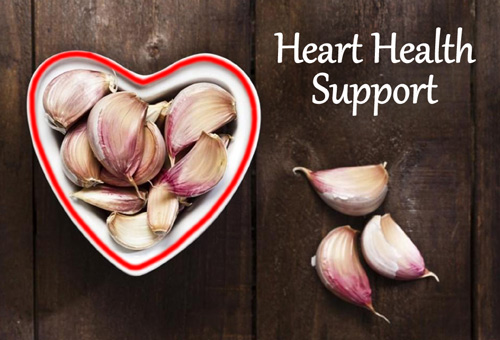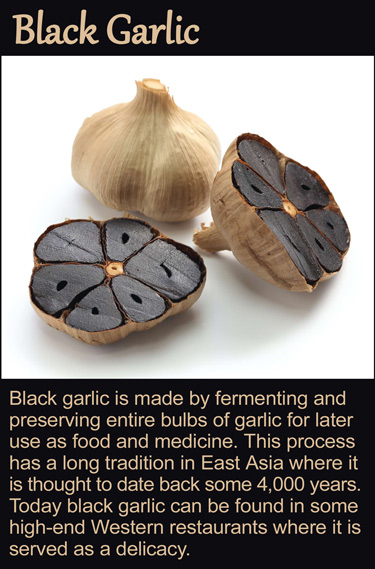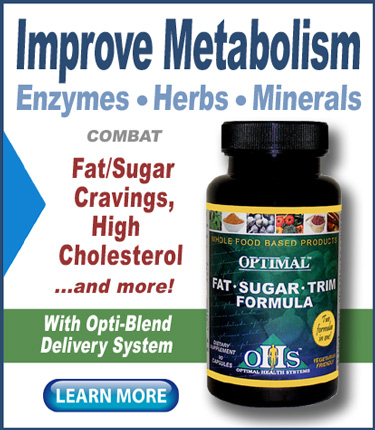According to the findings of a new study from Iran, using garlic powder as a prebiotic supplement decreases the cardiovascular risks associated with metabolic syndrome.
A person is considered to have metabolic syndrome when they are diagnosed with a combination of any three of five medical conditions: abdominal obesity, high blood pressure, high blood sugar, high serum triglycerides, and low HDL cholesterol.
In the U.S. about 25% of the adult population has metabolic syndrome, a proportion that drastically increases with age.
The Iranian researchers also reported that garlic powder improved intestinal transit time and reduced fat accumulation in as little as six weeks of supplementing.
“Consumption of garlic can be considered a strategy for management of cardiovascular risk factors, especially among subjects with metabolic syndrome and patients with non-communicable diseases linked to metabolic syndrome,” the researchers wrote in the study findings.
The study was published in the journal Phytotherapy Research in February 2023.
Garlic—a brief primer
Garlic (Allium sativum) is a species of bulbous flowering plant in the genus Allium. Its close relatives include the onion, shallot, leek, and chive. It is native to South Asia, Central Asia and northeastern Iran. Garlic has been used by humans for several thousand years, and was known to all the ancient civilizations.
Garlic’s use as a medicinal likely extends back as far as its use as a food. Garlic, or “Suan” in Chinese was known to the ancient Chinese people for some 4,000 years—before written records. In Traditional Chinese Medicine, it was prescribed to aid respiration and digestion, including for diarrhea and worm infestation.
Garlic was also utilized by the ancient Egyptians as both food and medicine, and it is one of the oldest-recorded herbs in the traditional Ayurvedic medicine of India. Ayurvedic practitioners used garlic for digestive problems and for treatment for bacterial, fungal and viral infections.
Western scientific research has shown that garlic possesses antibacterial and anti-fungal properties. It has also been shown to prevent blood clots. In the First World War, before the era of antibiotics, garlic was widely used as an antiseptic.
Today garlic is also one of the few herbs that was, and still is, used in three great healing systems of the world—Ayurveda Medicine, Traditional Chinese Medicine, and Western modern medicine.
Iranian study details
The double-blind, randomized, controlled trial recruited 90 subjects with metabolic syndrome and randomly assigned them to either a treatment or control group.
The treatment group received four tablets containing 400 mg of garlic powder, providing 1.5 mg of allicin daily. The control group received a 400 mg starch placebo which matched the appearance of the garlic powder tablet. Allicin is the organic sulfur compound that is responsible for garlic’s pungent smell—and is credited for most of garlic’s healing properties.
All participants consumed two tablets an hour before lunch and two tablets an hour before dinner over a test period of three months.
In addition, participants were asked to follow the common healthy dietary recommendations throughout the follow-up. To monitor intake of allicin in their diet participants filled-out questionnaires to document rich food sources (whole garlic, onion, scallion and leek). Physical activity was also assessed.
Study findings
According to the study conclusions, the treatment group participants saw a significant improvement in intestinal transit time compared to the control group by the sixth week of testing. The researchers also documented significant reductions in Lipid Accumulation Product, or LAP.
LAP is a clinical marker of visceral obesity and is used as a simple, accurate tool to estimate cardiovascular risk, metabolic syndrome and even overall mortality.
In addition, garlic powder supplementation reduced the levels of CI, a tool used to calculate risk of type 2 diabetes, and AIP, a marker used to predict the risk of coronary heart disease.
Healing power of bioactive compounds
Researchers pointed to previous studies to assess the potential role of garlic. The researchers particularly noted allicin’s ability to “moderate intestinal absorption and liver production of triglycerides.”
In addition, garlic possesses a number of other bioactive components including S-allylcysteine, ajoene, diallyl disulfide, and S-methylcysteine sulfoxide.
Research has also demonstrated that garlic oil works as an anti-inflammatory that can be applied topically to joints and muscles. The Arthritis Foundation even recommends it to help prevent cartilage damage from arthritis.
Find garlic in the following Optimal Health Systems products:
• Optimal Fat•Sugar•Trim
• Optimal B.F.F (Blood-Vessel Flexibility Formula)
• Optimal Fruit & Veggie Plus
– – –
Sources: Phytotherapy Research (via Wiley Online Library), Wikipedia-allicin, Wikipedia-garlic.



